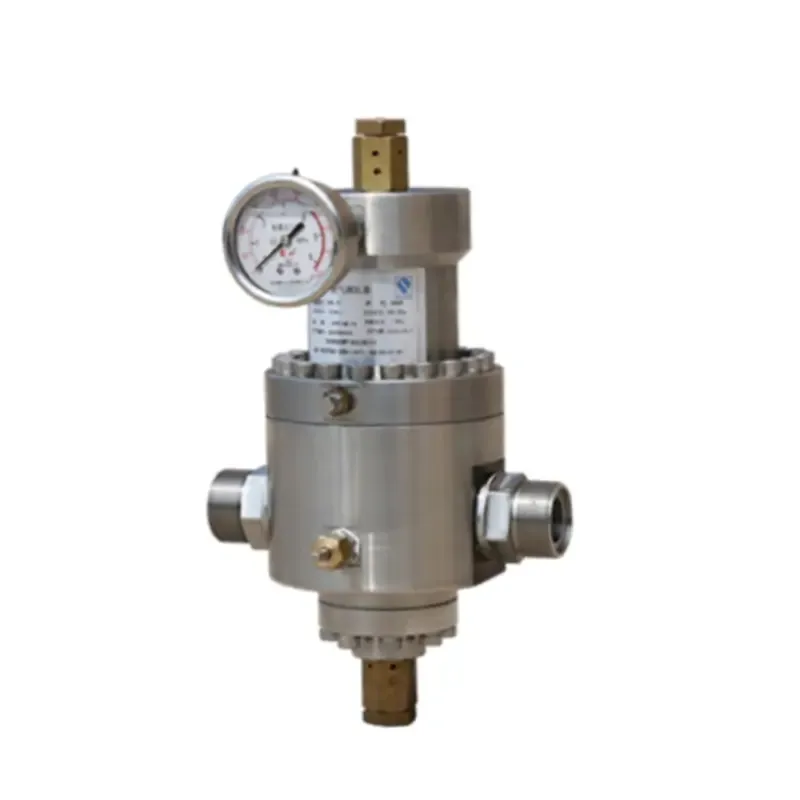
Nov . 19, 2024 09:32
Back to list
Understanding Electric Control Valves for Fluid Regulation and System Efficiency Improvements
Understanding Electric Regulating Valves A Comprehensive Overview
Electric regulating valves play a crucial role in various industrial applications, offering precision control over fluid flow, pressure, and temperature. These sophisticated devices adjust flow rates in response to control signals, thereby ensuring optimal operational efficiency across a range of processes.
At their core, electric regulating valves combine a valve body with an electric actuator. The valve body can be a globe, ball, or butterfly design, each serving different purposes and applications. The electric actuator is responsible for the valve's movement, typically receiving signals from a control system based on real-time process parameters. This configuration allows for automated control of the flow media, facilitating significant improvements in accuracy and response time compared to traditional pneumatic or manual systems.
One of the primary advantages of electric regulating valves is their ability to provide precise control. This is particularly important in processes where maintaining specific flow rates or pressure levels is critical. Industries such as chemical manufacturing, water treatment, and HVAC systems benefit significantly from the enhanced control capabilities of electric valves. For instance, in chemical processes, even minor fluctuations in flow can lead to drastic changes in reaction rates, product quality, or safety risks. Electric regulating valves help mitigate these risks by maintaining stable conditions.
electric regulating valve

Another noteworthy feature of electric regulating valves is their versatility. These valves can be easily integrated into existing control systems, including programmable logic controllers (PLCs) and distributed control systems (DCS). This adaptability allows for seamless upgrades to automated systems without extensive modifications to hardware or infrastructure. As a result, facilities can enhance their operational efficiency without incurring significant downtime or costs.
The maintenance of electric regulating valves is generally straightforward, with fewer components subject to wear compared to pneumatic valves. However, regular inspection of the actuator and feedback systems is vital to ensure reliability. Some advanced electric valves even come with built-in diagnostics, enabling predictive maintenance and minimizing the risk of unexpected failures.
When considering the implementation of electric regulating valves, it's essential to assess the specific needs of the application. Factors such as fluid characteristics, pressure requirements, and ambient conditions play a critical role in selecting the right valve type and actuator. Additionally, the choice between on-off and modulating control can significantly impact system performance. While on-off control is suitable for simple applications, modulating control allows for fine adjustments that are essential in complex processes.
In conclusion, electric regulating valves represent a significant advancement in flow control technology. Their ability to deliver accurate, responsive, and reliable control makes them indispensable in modern industrial settings. As industries continue to evolve and prioritize automation and efficiency, the demand for electric regulating valves is expected to grow. By understanding their functionality and applications, organizations can harness the full potential of these devices, enhancing productivity and maintaining high standards of quality and safety.
Latest news
-
Safety Valve Spring-Loaded Design Overpressure ProtectionNewsJul.25,2025
-
Precision Voltage Regulator AC5 Accuracy Grade PerformanceNewsJul.25,2025
-
Natural Gas Pressure Regulating Skid Industrial Pipeline ApplicationsNewsJul.25,2025
-
Natural Gas Filter Stainless Steel Mesh Element DesignNewsJul.25,2025
-
Gas Pressure Regulator Valve Direct-Acting Spring-Loaded DesignNewsJul.25,2025
-
Decompression Equipment Multi-Stage Heat Exchange System DesignNewsJul.25,2025

